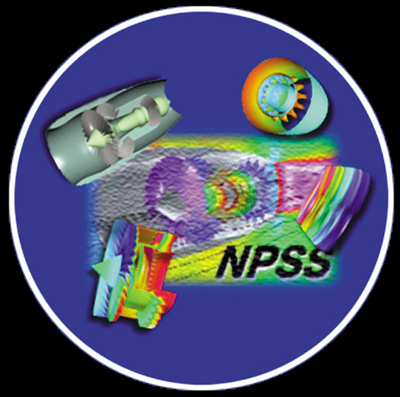Reducing the Time and Cost of Testing Engines
Originating Technology/NASA Contribution
Producing a new aircraft engine currently costs approximately $1 billion, with 3 years of development time for a commercial engine and 10 years for a military engine. The high development time and cost make it extremely difficult to transition advanced technologies for cleaner, quieter, and more efficient new engines. To reduce this time and cost, NASA created a vision for the future where designers would use high-fidelity computer simulations early in the design process in order to resolve critical design issues before building the expensive engine hardware.
To accomplish this vision, NASA’s Glenn Research Center initiated a collaborative effort with the aerospace industry and academia to develop its Numerical Propulsion System Simulation (NPSS), an advanced engineering environment for the analysis and design of aerospace propulsion systems and components. Partners estimate that using NPSS has the potential to dramatically reduce the time, effort, and expense necessary to design and test jet engines by generating sophisticated computer simulations of an aerospace object or system. These simulations will permit an engineer to “test” various design options without having to conduct costly and time-consuming real-life tests. By accelerating and streamlining the engine system design analysis and test phases, NPSS facilitates bringing the final product to market faster.
NASA’s NPSS Version (V)1.X effort was a task within the Agency’s Computational Aerospace Sciences project of the High Performance Computing and Communication program, which had a mission to accelerate the availability of high-performance computing hardware and software to the U.S. aerospace community for its use in design processes. The technology brings value back to NASA by improving methods of analyzing and testing space transportation components.
Partnership
Wolverine Ventures, Inc., of Jupiter, Florida, signed a Space Act Agreement with NASA, sponsored by the Aerospace Propulsion and Power project under the
Vehicle Systems program, enabling the company to commercialize NPSS V1.X. As part of the agreement, NASA Glenn and Wolverine jointly provide access and services for NPSS V1.X.
Product Outcome
NPSS V1.X is emerging as the U.S. standard for aerospace simulations. Serving as an object-oriented design code for aerospace engineers to analyze military, rocket, and commercial jet aircraft engines, the tool provides engineers with unprecedented capability, levels of interoperability, and ease of use. Wolverine Ventures and Glenn have put together two packages for NPSS V1.X that are available to universities and the general business community. In addition to delivering the software and documentation, Wolverine Ventures provides maintenance and support to users, and assists in the conversion and development of NPSS V1.X components, models, and utilities. The company develops software for interfacing NPSS V1.X with customer applications, and it offers various levels of training for its customers.
NPSS V1.X offers key technological advances in designing aircraft engines and enhancing the U.S. aerospace industry’s competitiveness in the global marketplace. Using this technology, companies estimate a 55-percent reduction in the time to perform engine system simulation throughout the product life cycle. This translates into a projected annual savings to the aircraft industry of over $50 million a year from increased productivity. Companies could see a 50-percent improvement in the way they do business with industry partners and customers.
NPSS V1.X is not limited to aerospace engine applications. Any system, component, or process that can be modeled mathematically can take advantage of its capabilities, opening up the possibility for applications in the transportation, automotive, fuel cell, ground-based power, water treatment, and biomedicine industries.

Numerical Propulsion System Simulation (NPSS) Version 1.X serves as an object-oriented design code for aerospace engineers to analyze military, rocket, and commercial jet aircraft engines.













